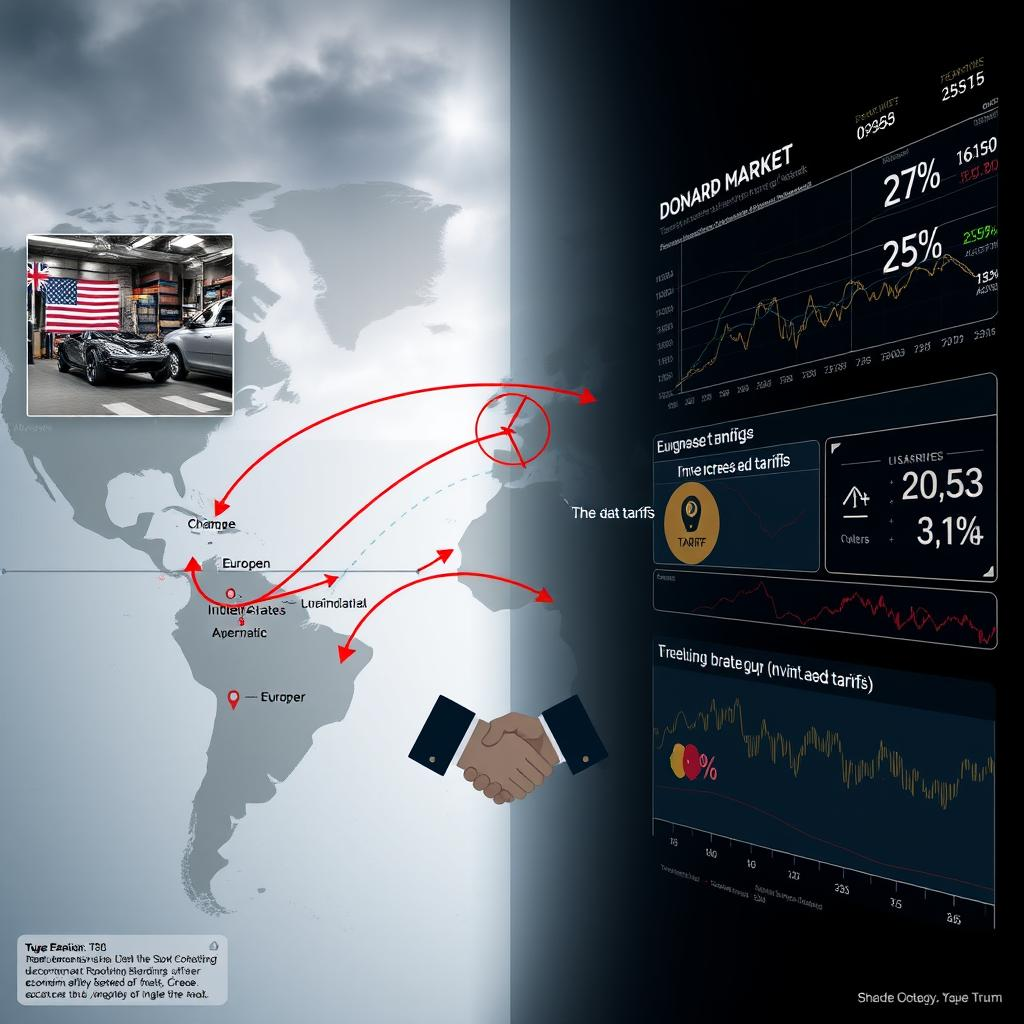Introduction
Donald Trump’s trade policies have dramatically reshaped the global economic landscape. His administration’s tariffs have not only shaken stock markets but also shifted international trade relations, marking a pivotal era in economic history.
Strategic Analysis
Trump’s administration made aggressive moves, slapping a hefty 25% tariff on US automobile imports and 20% on European goods. These moves forced a realignment of strategies, especially across sectors like luxury, banking, and automotive in Europe. Companies had to reevaluate how and where they source their products and engage with markets. European automakers, in particular, faced pressures to reconsider their manufacturing locales and supply chains—a reflection of how deeply these policies altered global strategies (source, “FCA_2024Q1”).
Adding to the mix, the tariffs on electrical equipment forced European firms to navigate varied sourcing strategies, highlighting the complex ripple effects U.S. policies can have on their economies.
Impact Projections
The sweeping impact of Trump’s tariffs goes beyond immediate dollars and cents. They catalyze countries to reconfigure trade pacts and diplomatic approaches—potentially reshaping the very structure of global trade (source, “ESMA_2023H2”). This shift promises a more fragmented global market, dominated by bilateral deals instead of broad multinational agreements. Such a market demands sharp strategy and prudent fiscal maneuvering from businesses around the globe.
Innovation Roadmap
Looking ahead, countries must craft new strategies to offset tariffs, possibly through renegotiated agreements or revamped supply chains. To manage higher costs, expecting spikes in tech investments or automation upgrades isn’t far-fetched. We might witness the birth of new trade alliances designed to skirt around current tariffs—targeting sectors that need it most.
Conclusion
Trump’s tariffs have undeniably rippled through global markets, causing shifts that will echo for years. As the world moves forward, the focus remains on nimbleness and strategic shifts. Nations and companies alike have to innovate and adapt, carving a path through an increasingly intricate international trade environment, poised for new dynamics and uncharted opportunities.

Leave a Reply